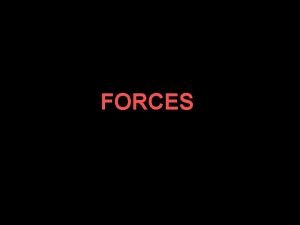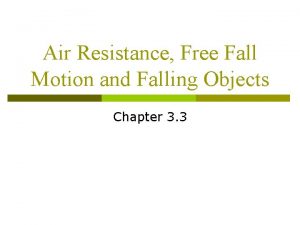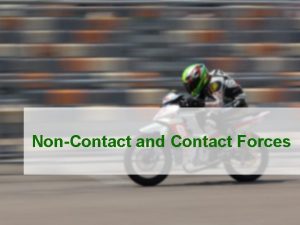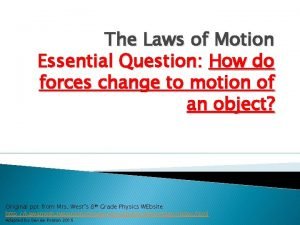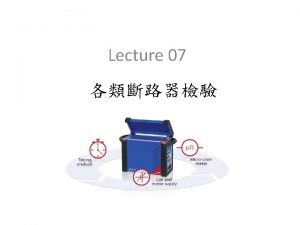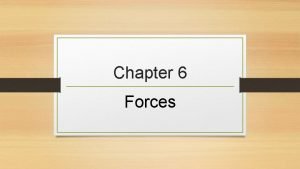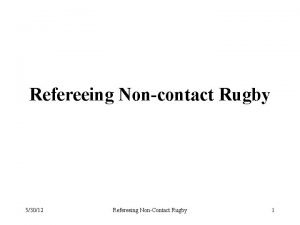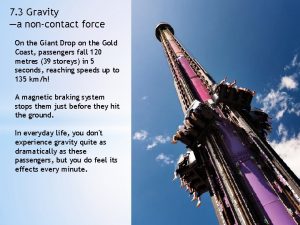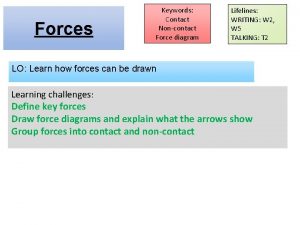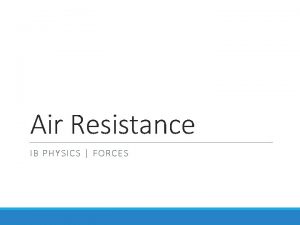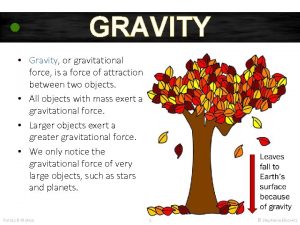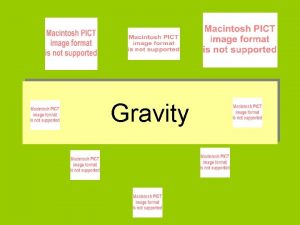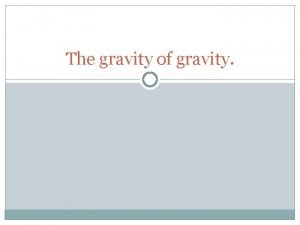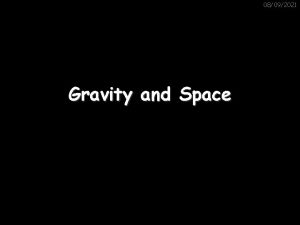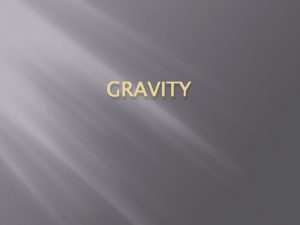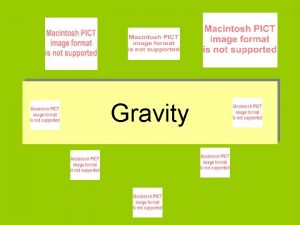air resistance force contact force noncontact force gravity




















- Slides: 20

• air resistance • force • contact force • noncontact force • gravity • Friction • Tension • Buoyancy • Newton’s first law of motion • Newton’s second law of motion • Newton’s third law of motion

What is force? • A force is a push or a pull on an object. • Force has both size and direction. • You can use arrows to show the size and direction of a force. • The unit force is the newton (N).

What is force? (cont. ) • A contact force is a push or a pull on one object by another object that is touching it. • A force that one object can apply to another object without touching it is a noncontact force.

Examples of Contact and Non Contact Forces • Friction Non Contact Forces • Electrical • Buoyant Force • Gravitational • Tension • Magnetic • Compression • Air Resistance

Gravity—A Noncontact Force • Gravity is an attractive force that exists between all objects that have mass. • The size of a gravitational force depends on the masses of the objects and the distance between them.

Gravity—A Noncontact Force (cont. ) If the mass of an object increases, the gravitational force increases between it and another object.

Gravity—A Noncontact Force (cont. ) As two objects move apart, the gravitational force between them decreases.

Gravity—A Noncontact Force (cont. ) • Weight is a measure of the gravitational force acting on an object’s mass. • The weights of objects on the Moon are smaller than objects on Earth because the mass of the Moon is smaller.

• Tension- A force related to the stretching of an object. • Buoyancy- an upward acting force exerted by a fluid that opposes an objects weight. – When an object is placed in water, there are 2 forces acting on it. The force of gravity and the buoyant force. If the Gravitation force is less than the buoyant force, then the object will float (a boat) if not, it sinks like a rock.

Friction—A Contact Force Friction is a contact force that resists the sliding motion of two surfaces that are touching. friction from Latin fricare, means “to rub”

Friction—A Contact Force (cont. ) • The force of friction acts in the opposite direction of an object’s motion. • The heavier an object, the more it is affected by friction than a lighter one. • Air resistance is the frictional force between air and objects moving through it.

Unbalanced Forces and Acceleration • When unbalanced forces act on an object, the object’s velocity changes. • Unbalanced forces can change either the speed or the direction of motion.


Balanced Forces and Constant Motion • When balanced forces act on an object, the motion is constant. • The object is either at rest or moving at a constant velocity.


Forces and Newton’s Laws of Motion • According to Newton’s first law of motion, if the net force acting on an object is zero, the motion of the object does not change. • Inertia is the tendency of an object to resist a change in its motion.

Forces and Newton’s Laws of Motion (cont. ) inertia from Latin inertia, means “idle” or “inactive”

Forces and Newton’s Laws of Motion (cont. ) According to Newton’s second law of motion, the acceleration of an object is equal to the net force exerted on the object divided by the object’s mass.

Forces and Newton’s Laws of Motion (cont. ) The greater the mass, the greater the force needed to accelerate the object at the same rate.

Forces and Newton’s Laws of Motion (cont. ) • Newton’s third law of motion says that for every action there is an equal and opposite reaction. • When one object exerts a force on a second object, the second object exerts a force of the same size but in the opposite direction on the first object. • Equal and opposite forces are called force pairs.
 Is air resistance a noncontact force
Is air resistance a noncontact force Is gravity a noncontact force
Is gravity a noncontact force Tension contact or noncontact
Tension contact or noncontact Is upthrust a contact or noncontact force
Is upthrust a contact or noncontact force Buoyancy force contact or noncontact
Buoyancy force contact or noncontact What is non contact force
What is non contact force Air resistance contact force
Air resistance contact force Contact and noncontact forces
Contact and noncontact forces Air resistance and gravity
Air resistance and gravity What is a force that opposes motion through direct contact
What is a force that opposes motion through direct contact Why is gravity a non contact force
Why is gravity a non contact force Noncontact force examples
Noncontact force examples Noncontact force examples
Noncontact force examples Whats a noncontact force
Whats a noncontact force Drag force coefficient formula
Drag force coefficient formula Gravity for dummies and dummies for gravity equations
Gravity for dummies and dummies for gravity equations Air higroskopis adalah
Air higroskopis adalah Introduction of filtration
Introduction of filtration Advantage
Advantage Advantage of vcb
Advantage of vcb Contact vs long range force
Contact vs long range force



